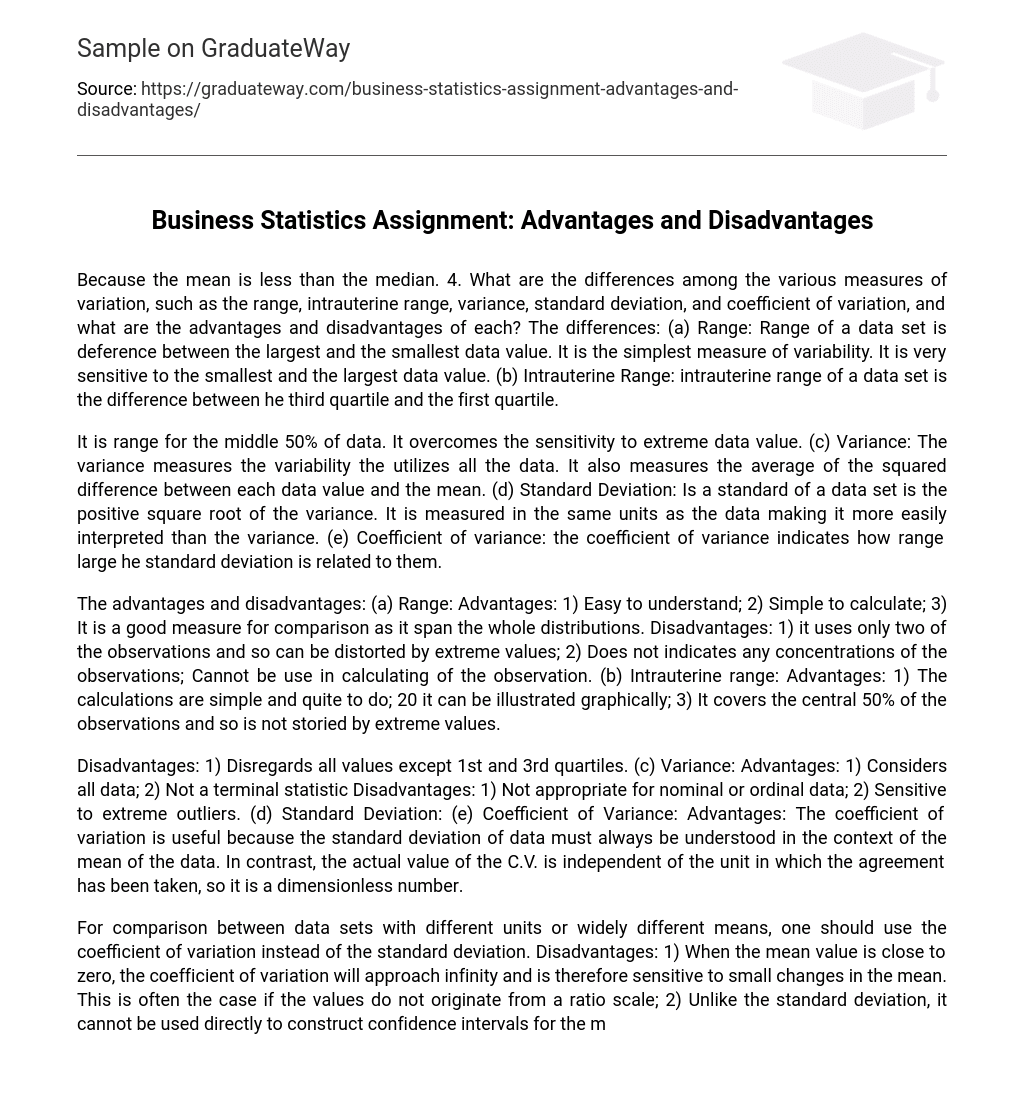What are the differences among the various measures of variation, such as the range, intrauterine range, variance, standard deviation, and coefficient of variation, and what are the advantages and disadvantages of each? The differences:
- Range: Range of a data set is deference between the largest and the smallest data value. It is the simplest measure of variability. It is very sensitive to the smallest and the largest data value.
- Intrauterine Range: intrauterine range of a data set is the difference between he third quartile and the first quartile. It is range for the middle 50% of data. It overcomes the sensitivity to extreme data value.
- Variance: The variance measures the variability the utilizes all the data. It also measures the average of the squared difference between each data value and the mean.
- Standard Deviation: Is a standard of a data set is the positive square root of the variance. It is measured in the same units as the data making it more easily interpreted than the variance.
- Coefficient of variance: the coefficient of variance indicates how range large he standard deviation is related to them.
The advantages and disadvantages:
Range: Advantages:
- Easy to understand;
- Simple to calculate;
- It is a good measure for comparison as it span the whole distributions.
Disadvantages:
- it uses only two of the observations and so can be distorted by extreme values;
- Does not indicates any concentrations of the observations;
- Cannot be use in calculating of the observation.





